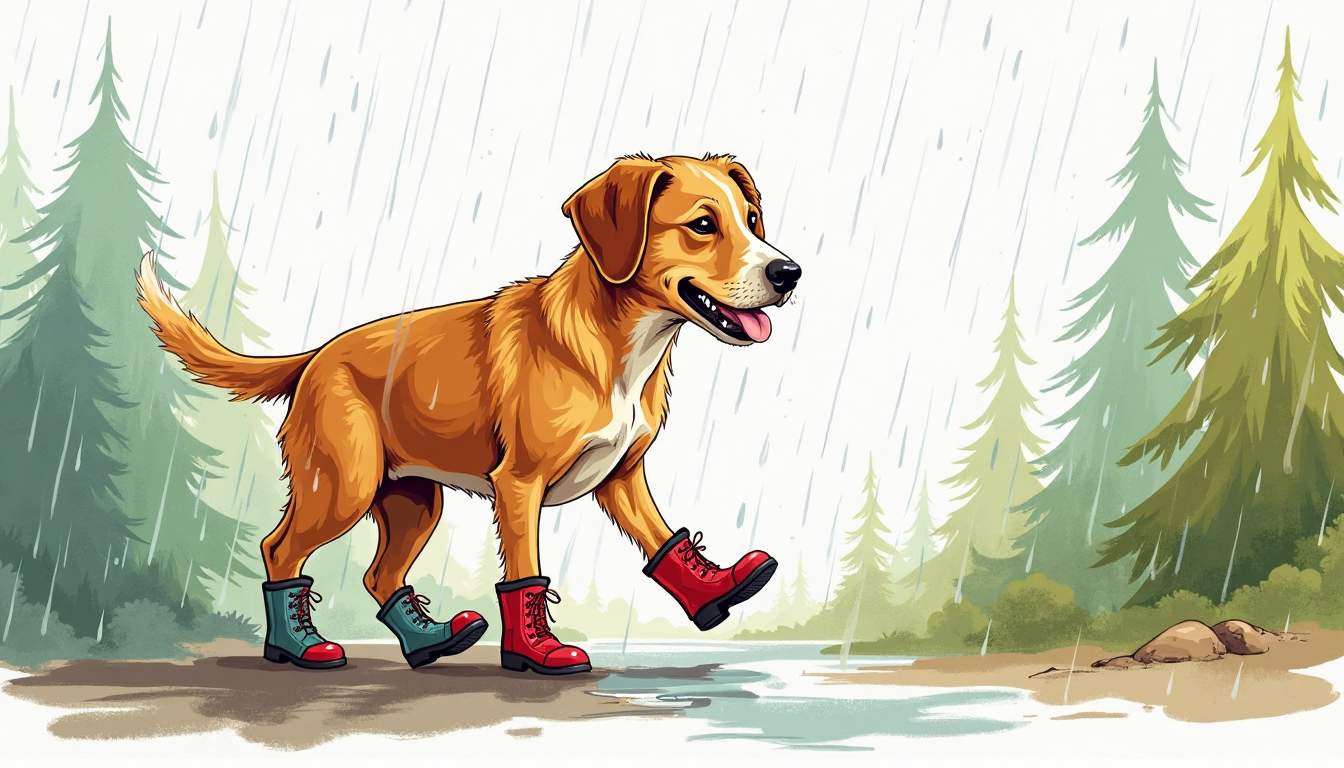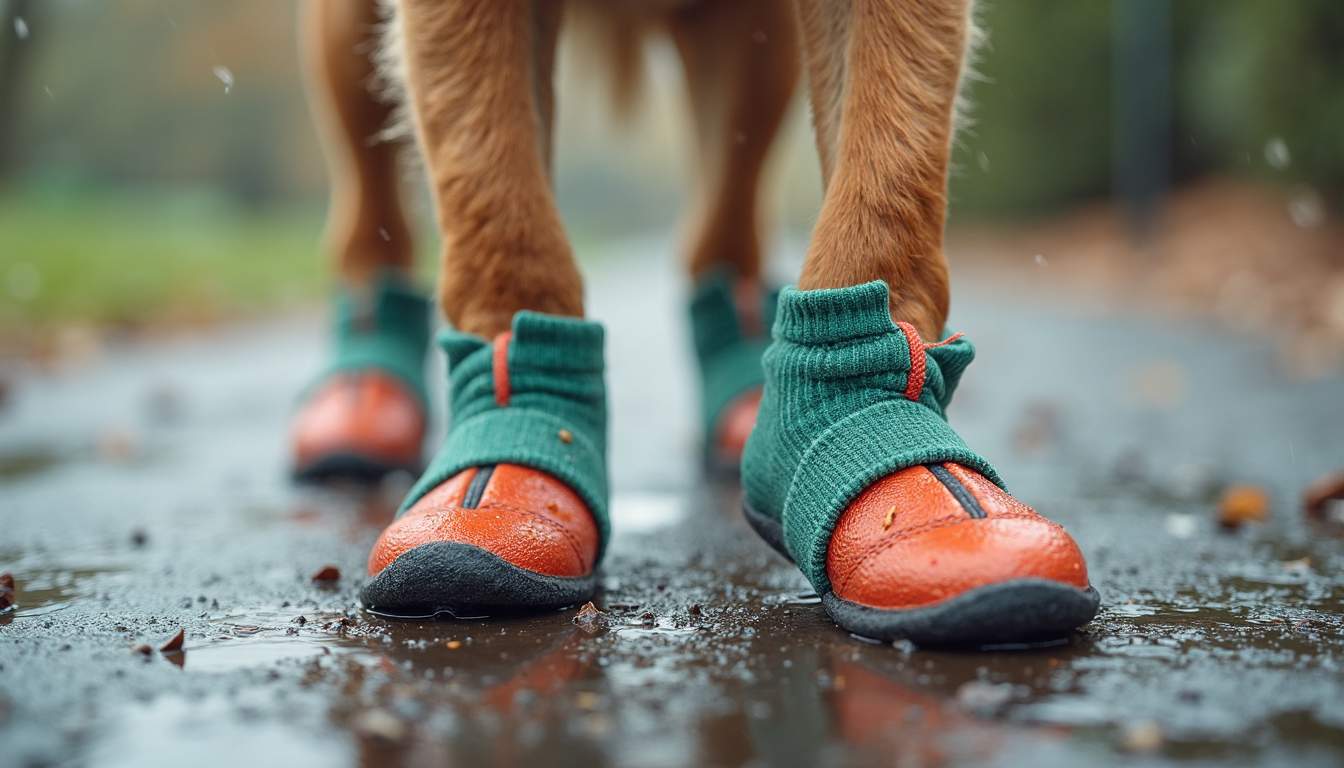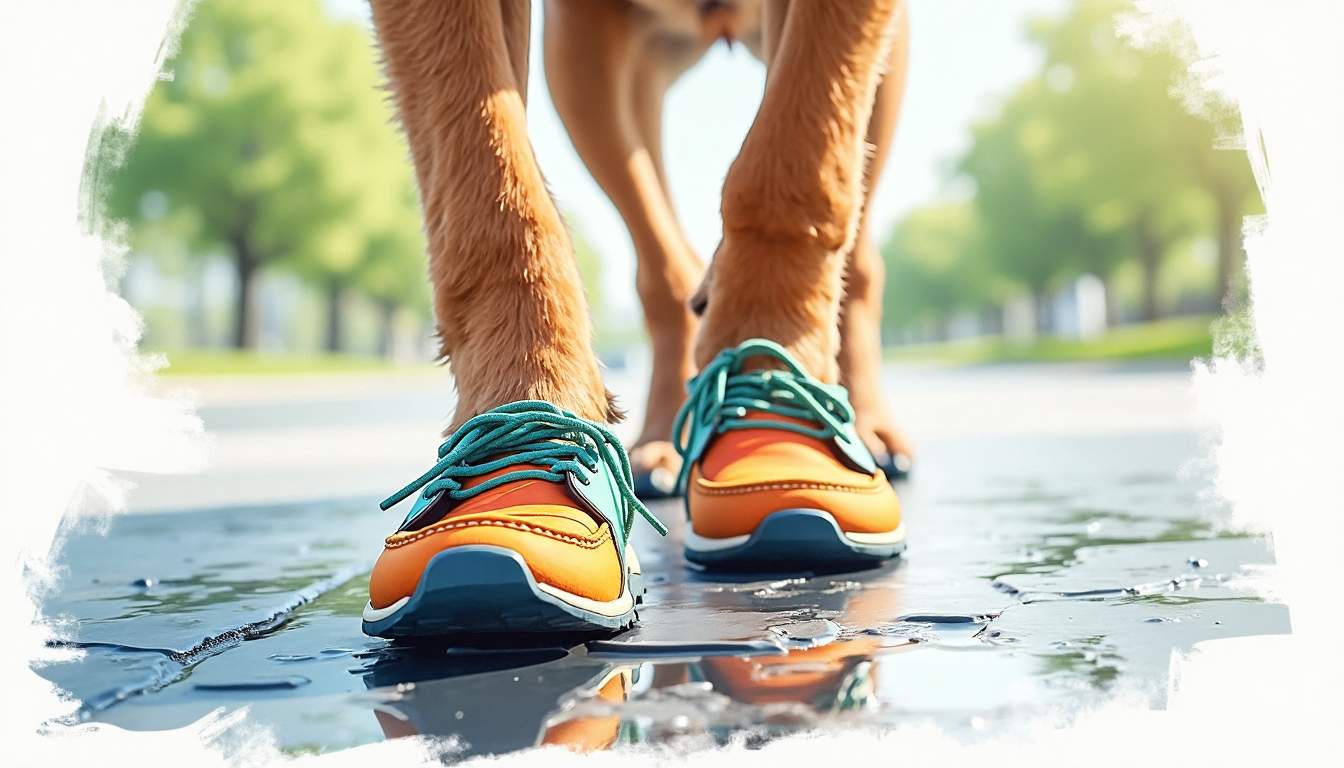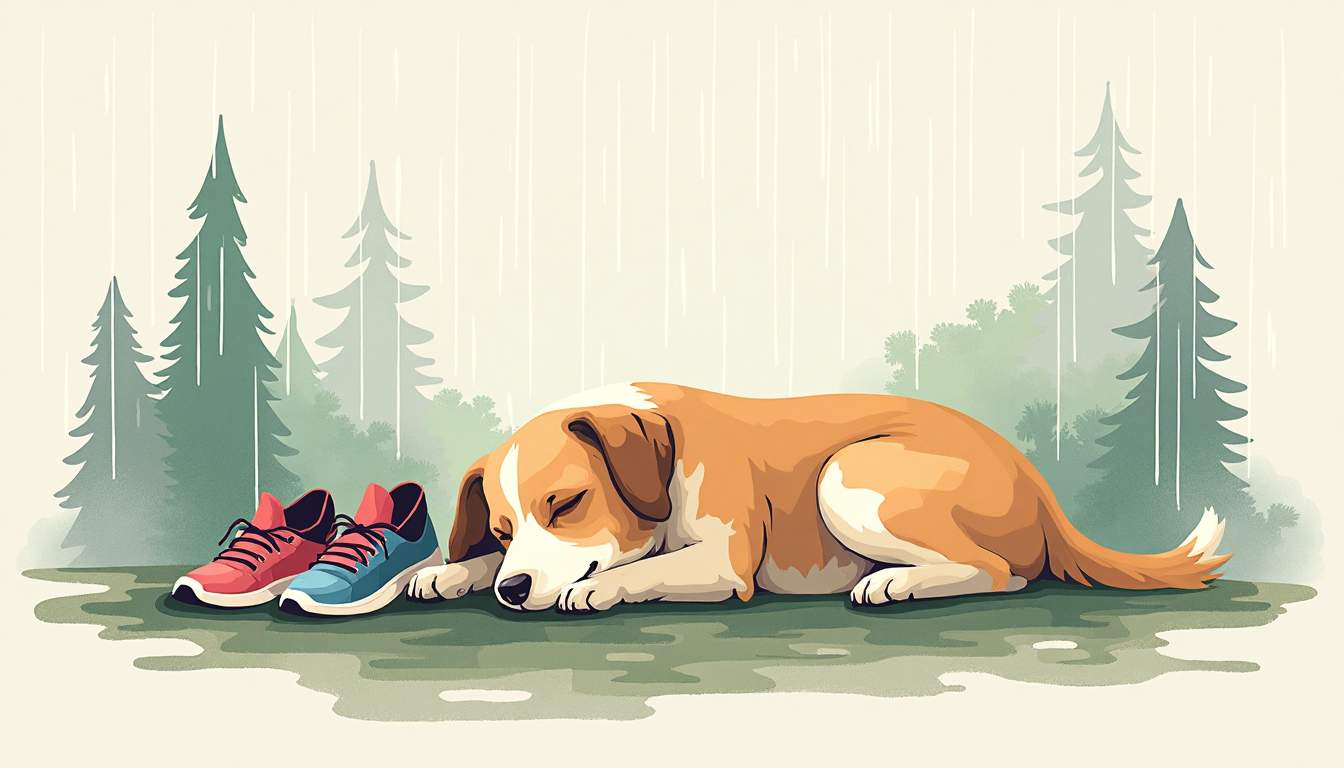
Walking a dog is one of life’s simple pleasures, but the experience can be significantly impacted by the weather. Rain, snow, ice, or scorching heat can make walks uncomfortable for both the dog and the owner. One solution that has gained popularity in recent years is the use of dog shoes. But are they really the secret to enjoyable walks in any weather? This article delves into the benefits, considerations, and tips for using dog shoes effectively.
The Benefits of Dog Shoes
Protection from Harsh Elements
Dog shoes offer a layer of protection for your pet’s paws against various environmental hazards. In winter, the cold ground and ice can lead to frostbite or cuts. Salt and chemicals used to melt ice can also irritate a dog’s paws. Similarly, during summer months, hot pavement can burn sensitive pads. Dog shoes act as a barrier, keeping paws safe from these dangers.

Moreover, in rugged terrains, dog shoes can protect against sharp rocks, thorny bushes, and other potential injuries. This is especially beneficial for adventurous dogs who love to explore off the beaten path. The right pair of dog shoes can also help prevent dirt and debris from getting lodged between the pads, which can cause discomfort and lead to infections if not addressed promptly. By keeping their paws clean and protected, you can ensure that your furry friend remains healthy and happy, ready for the next adventure.
Improved Traction
Slipping and sliding can be a concern, especially in wet or icy conditions. Many dog shoes are designed with rubber soles that provide excellent traction. This feature not only helps prevent falls but also gives dogs more confidence to navigate challenging surfaces. For older dogs or those with mobility issues, this added grip can make a significant difference in their walking experience. Additionally, some dog shoes come with specialized tread patterns that enhance grip on various surfaces, whether it be gravel, mud, or snow, allowing your pet to maintain stability and control.
Comfort and Support
Just like humans, dogs can experience discomfort from prolonged walking on hard or uneven surfaces. High-quality dog shoes often come with cushioning and support that can alleviate pressure on their paws. This is particularly important for dogs with existing paw issues or those recovering from injuries. A comfortable dog is more likely to enjoy their walks, making the experience pleasant for both the pet and the owner. Furthermore, many dog shoes are designed with adjustable straps to ensure a snug fit, preventing chafing and allowing for natural movement. This attention to detail not only enhances comfort but also encourages dogs to wear their shoes without fuss, making outings more enjoyable. To explore premium options, visit here for high-quality dog shoes from Supreme Dog Garage.
Choosing the Right Dog Shoes
Size and Fit
One of the most crucial aspects of selecting dog shoes is ensuring the right fit. Shoes that are too tight can cause discomfort and restrict movement, while shoes that are too loose may fall off during walks. To find the perfect size, measure your dog’s paws while they are standing, as this will give the most accurate measurement. Many brands provide sizing charts, so be sure to consult these before making a purchase.
Additionally, consider the design of the shoe. Some shoes have adjustable straps that can help achieve a snug fit, while others may have elastic bands for added security. Trying different styles can help determine what works best for your dog. It’s also worth noting that dogs’ paws can change in size due to factors like temperature and activity level, so it’s a good idea to re-measure periodically, especially if you notice any signs of discomfort during walks.
Material and Durability
Dog shoes come in various materials, each offering different levels of durability and comfort. Look for shoes made from breathable materials that allow air circulation, especially if you plan on using them in warmer weather. Waterproof options are ideal for rainy or snowy conditions, providing protection from moisture.
Durability is another key factor. Active dogs may require shoes that can withstand rough play and tough terrains. Check reviews and product descriptions to ensure the shoes you choose are built to last. Additionally, consider the sole of the shoe; rubber soles often provide excellent traction, which is essential for maintaining stability on slippery surfaces. Some shoes even come with reinforced toe caps for added protection against wear and tear, making them a great choice for adventurous pups who love to explore.
Style and Design
While functionality is paramount, the style of dog shoes can also be a fun consideration. Many brands offer a variety of colors and designs, allowing pet owners to express their dog’s personality. However, it’s important to prioritize comfort and safety over aesthetics. A stylish shoe that doesn’t fit well or provides inadequate protection won’t serve its purpose.
Moreover, some brands are now offering customizable options, allowing you to choose patterns or even add your dog’s name to the shoes. This not only adds a personal touch but also makes it easier to identify your dog’s shoes in a multi-pet household. When selecting a design, consider your dog’s lifestyle; if they are prone to muddy adventures, darker colors or patterns may be more practical than lighter shades that show dirt easily. Ultimately, the right pair of dog shoes should reflect both your dog’s unique style and their specific needs for comfort and protection during their outdoor escapades.
Training Your Dog to Wear Shoes
Gradual Introduction
Introducing dog shoes to your pet should be a gradual process. Start by allowing your dog to sniff and explore the shoes before attempting to put them on. Once they seem comfortable, try placing one shoe on their paw for short periods, gradually increasing the duration as they become accustomed to the sensation.
Positive reinforcement is key during this training phase. Reward your dog with treats and praise when they wear the shoes, creating a positive association with the experience. Patience is essential, as some dogs may take longer to adjust than others.
Short Walks
Once your dog is comfortable wearing the shoes indoors, it’s time to take them for short walks. Start with brief outings in familiar environments to help them adjust to walking in the shoes. Monitor their behavior closely; if they seem uncomfortable or are trying to remove the shoes, it may be necessary to go back to the training phase.
As your dog becomes more confident, gradually increase the length of your walks. This will not only help them acclimate to the shoes but also allow you to assess how well they perform in different conditions.
Monitoring for Discomfort
Even after training, it’s essential to keep an eye on your dog while they are wearing shoes. Look for signs of discomfort, such as limping, excessive paw licking, or trying to remove the shoes. If any of these behaviors occur, it may be necessary to reassess the fit or style of the shoes. Remember, comfort should always be the priority.
Common Misconceptions About Dog Shoes
Only for Cold Weather
Many people assume that dog shoes are only necessary during winter months. However, they can be beneficial year-round. In addition to providing warmth in cold weather, dog shoes protect against hot pavement in the summer and can even shield paws from allergens in the spring and fall. The versatility of dog shoes makes them a valuable accessory for any season.
All Dogs Need Them
While many dogs can benefit from wearing shoes, not all dogs require them. Factors such as breed, activity level, and individual paw sensitivity play a role in determining whether shoes are necessary. For instance, breeds with thick pads may not need shoes for regular walks, while those with thinner pads may require protection. Assess your dog’s unique needs to make an informed decision.
They Are Uncomfortable
Some people believe that dog shoes are inherently uncomfortable for pets. However, this perception often stems from poorly fitting or low-quality shoes. When properly fitted and made from comfortable materials, dog shoes can be quite enjoyable for dogs. The key is to choose high-quality options and ensure a proper fit, allowing your dog to walk naturally.
Tips for Successful Walks with Dog Shoes
Regular Maintenance
Just like human footwear, dog shoes require regular maintenance. After each use, inspect the shoes for signs of wear and tear. Clean them according to the manufacturer’s instructions to prevent dirt and debris from accumulating. This will not only extend the life of the shoes but also ensure they remain comfortable for your dog.

Weather Considerations
Before heading out for a walk, consider the weather conditions. In extreme heat, ensure that the shoes are made from breathable materials to prevent overheating. Conversely, in cold or wet conditions, waterproof shoes are essential. Being mindful of the weather will help ensure your dog remains comfortable during walks.
Stay Hydrated
Walks can be more strenuous when dogs are wearing shoes, especially in warm weather. Always carry water for both you and your dog, taking breaks as needed. Staying hydrated is essential for maintaining energy levels and overall well-being during walks.
Conclusion
Dog shoes can indeed be the secret to enjoyable walks in any weather, providing protection, comfort, and confidence for your furry friend. By choosing the right shoes, training your dog to wear them, and addressing common misconceptions, pet owners can enhance their walking experience. With the right preparation and care, walks can become a delightful adventure, no matter the conditions outside. So, whether it’s a chilly winter morning or a hot summer afternoon, consider investing in a pair of dog shoes to keep your canine companion happy and healthy.
